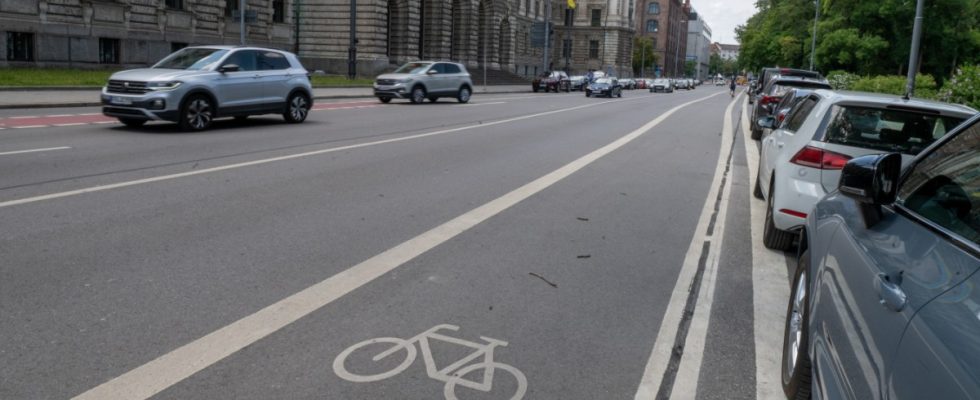Will new cycle paths be built in Munich soon? Will speed take precedence over care in the future? The decision, which was made in the general assembly of the city council with the votes of the town hall coalition of the Greens/Pink List and SPD/Volt, sounds like such a promise: “The city administration is commissioned to implement all planned cycling decision-making measures as a priority first “that enable more road safety for cycling in the quickest and most effective way,” is the wording of the decision.
But what does that mean specifically? Has time been wasted so far because the planning was too elaborate? Is the city really ready to reduce standards in order to accelerate the transport transition? Representatives of the bicycle lobby are calm about the development.
“In principle, we welcome any possibility of accelerating cycling infrastructure projects. So if there are ways to achieve the goal more quickly through less structurally complex measures, we are always there,” says Katharina Horn from the Federal Nature Conservation Association (BN) in Bavaria and spokeswoman for the Munich cycling decision.
Andreas Schön, also a cycling decision spokesman and first chairman of the General German Bicycle Club (ADFC) in Munich, sees it similarly. He doesn’t want to accept the argument that cycling projects should generally become cheaper because of the budget situation: “As long as the city builds the Schleissheim Tunnel (for cars; Note d. editorial staff) wants to plan, which should cost between two and four billion euros, if there is money for cycle paths.”
The aim of the Munich cycling decision was to use a citizens’ initiative to bring about a town hall resolution that would strengthen the cycling infrastructure in Munich. In a first step in 2019, around 160,000 signatures were collected. In addition to ADFC and BN, the supporters also included Green City, the ÖDP, the Left and the Greens. In July 2019, the city council decided to adopt the goals of the cycling decision. Is he now moving away from this consistent stance?
Gudrun Lux from the Greens contradicts this view. The decision “does not weaken any standards.” In order to be able to do justice to the rapidly increasing bicycle traffic – official figures speak of an increase of 30 percent since 2019 – the traffic turnaround must go faster. “Of course we also need pragmatic and inexpensive solutions,” says Lux.
One of these solutions could be more so-called protected bike lanes, i.e. lanes that are demarcated with elements that are comparatively easy to install. During the Corona pandemic, several such lanes were created as pop-up cycle paths. ADFC representative Andreas Schön may not fundamentally reject this idea, but one point is important to him: solutions that take everyone’s interests into account are complex.
Protected bike lanes can be identified comparatively quickly. However, they create problems when there are parking spaces behind them, when zones for delivery traffic have to be created or when bus lanes have to be taken into account. “It simply costs money to please everyone,” is his experience. He therefore doesn’t hope that the numerous cycling projects that are currently being planned will be fundamentally reconsidered: “If you start all over again with everything that is planned, that would mean a complete standstill.”
The idea that narrower cycle paths would save money is also too short-sighted. The three meter width that was required in the decision is by no means an exaggerated requirement, but simply the standard that is intended for cycle highways so that they can be funded by the federal government. Narrow solutions for which there is no funding could actually end up being more expensive for the city.

